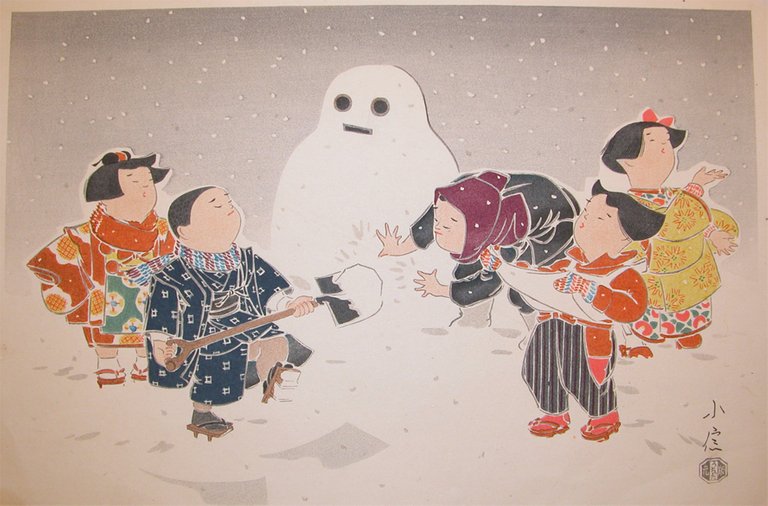yuki tokete mura ippai no kodomo kana
the village overflows
with children
—Issa


Good old Issa is here to give us this delightful image.
There is a playfulness as he tells us the snow melts and the village overflows, but rather than overflowing with water, it is overflowing with excited children eager to play outside again after a long winter of being stuck inside. Eager to stomp in all the wonderful puddles from the melting snow, no doubt, as Peppa Pig always tells us. Stomping in puddles being one of the great joys of childhood. The juxtaposition of these two images (flooding and children) is really what makes this haiku. It is a surprise and a delightful one at that.
The long winter—which was undoubtedly worse in the days before electric heating and also before global warming made the winter a little more mild—is finally ending. Rejoice! Spring the world over is associated with rebirth and youth, so the children flooding into the scene in this spring haiku are a fitting image. But it goes further. In this era children would have been wearing very bright clothes even more so than today. Picture the bright colors on the kids flooding into an otherwise drab and colorless winter landscape. This is one of Issa's most famous haiku and with good reason.
I have written often about the misfortunes of Issa's adult life: the death of his wife and kids, his poverty, and so on; but I haven't covered his childhood. It may not surprise you to hear that his childhood was also full of misery. His mother died when he was only three. His father remarried, but his stepmother hated him and made his young life a living hell. He was forced to work instead of going to school, but then instead of being grateful for his work she made him leave home at fourteen.
Yet despite all his misfortune, he always saw the joy in life and remained a playful boy at heart. The fact that he kept a love of life despite everything bad life threw at him has endeared him to the Japanese public for generations, making him one of the most popular haiku poets of all time. Of all the most famous haiku poets of the past (Bashō, Buson, Issa, Shiki), Issa is most beloved for the emotions he showed in his work. In spring the village overflows with children, and I'm sure Issa was right there with them in his heart playing, enjoying, and splashing in plenty of puddles.
The kigo (season word) here is yuki tokete, "snow melting". It is a kigo for mid-spring, which is round about right now according to the Japanese almanac, when it's finally getting warm enough for the snow to start melting and for us to start venturing outside once again. See my post a few days ago (this one) for a few more details on the microseason.
❦
 |
David LaSpina is an American photographer and translator lost in Japan, trying to capture the beauty of this country one photo at a time and searching for the perfect haiku. |